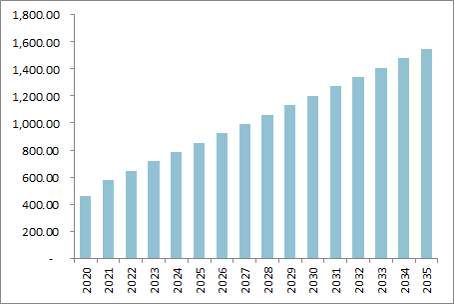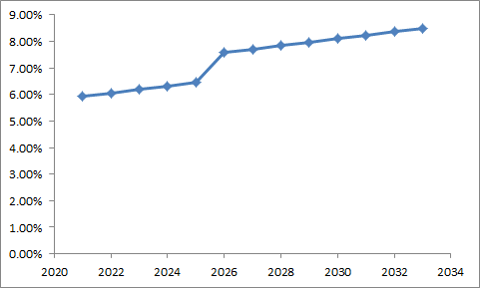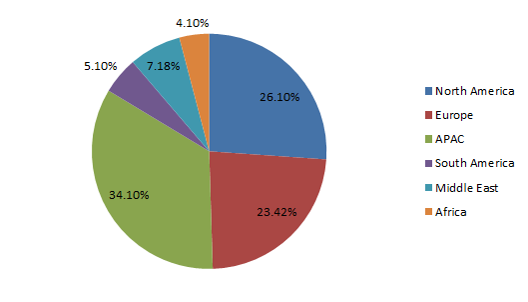Global Acrylic Resins Market Comprehensive Study 2024
Global Acrylic Resins Market: By Type (Thermoplastic, Thermosetting), Application (Paints & Coatings, Construction, Industrial & Commercial, Paper & Paperboard, Textiles & Fibers & Adhesives, Others), By Raw Material (Methacrylates, Acrylates, Hybrids), By Distribution Channel (Direct, Indirect), By Solvency (Solvent-borne, and Waterborne,); and By Regions (North America, Europe, Asia-Pacific, South America, Middle East & Africa) – Historical & Forecast Period (2020-2035) Comprehensive Study 2024
- Published Month : July 1, 2024
- No. of pages: 180
- Overview
- Table of Content
- Scope of Study
Acrylic Resins Market Overview:
Global Acrylic Resins market size was valued at USD 24,100 Million in 2023 and is expected to reach USD 33,200 Million at a (CAGR) of XX% from 2023 to 2035.
Acrylic resins are a versatile class of thermoplastic or thermosetting polymers derived from acrylic acid, methacrylic acid, or their derivatives. They are widely used in various industries due to their excellent properties and diverse applications.
Acrylic Resins Market Growth Drivers:
- Increasing Demand in Paints and Coatings: Acrylic resins are widely used in the paints and coatings industry due to their excellent weather resistance, UV stability, and durability. With growing construction activities and infrastructure development globally, there is a rising demand for high-performance coatings, which boosts the market for acrylic resins.
- Expansion in Automotive Sector: The automotive industry uses acrylic resins in various applications such as automotive coatings, adhesives, and sealants. With the increasing production of vehicles globally and the trend towards lightweight materials and improved aesthetics, the demand for acrylic resins in automotive applications is growing.
Acrylic Resins Market Trends:
- Growing Demand in Asia-Pacific: The Asia-Pacific region is witnessing robust growth in the acrylic resins market, driven by industrialization, urbanization, and infrastructure development in countries such as China, India, and Southeast Asian nations. Rising disposable incomes, expanding automotive production, and increasing construction activities contribute to the region’s demand for acrylic resins.
- Focus on Sustainability and Regulatory Compliance: Regulatory initiatives aimed at reducing VOC emissions and promoting sustainable practices are influencing product development and market dynamics. Manufacturers are investing in research and development to create acrylic resin formulations that meet or exceed environmental standards while maintaining performance attributes.
Global Acrylic Resins Market Revenue (USD Million), (2020-2035)

Global Acrylic Resins Market YOY (%), (2020-2035)

Global Acrylic Resins Market by Regions Share (%), 2024

Top Acrylic Resins Market Players Share (%), 2024

Study Coverage
| Metrics | Details |
| Years | 2020-2035 |
| Base Year | 2023 |
| Market Size | Revenue (USD Million) and Volume (K Tons) |
| Regions | North America – U.S, Canada and Mexico Europe- Germany, France, United Kingdom, Italy, Spain, Netherlands, Poland, Belgium, Denmark and Rest of Europe APAC- China, Japan, India, South Korea, Taiwan, Vietnam, Singapore, Philippines, Australia, and Rest of Asia-Pacific Middle East- Kuwait, Saudi Arabia, Oman, Qatar, UAE, Egypt, and Rest of Middle East Africa- South Africa, Chad, Mali, Sudan, Algeria, and Rest of Africa |
| Segments | By Type (Thermoplastic, Thermosetting)
By Solvency (Solvent-borne, and Waterborne) By Raw Material (Methacrylates, Acrylates, Hybrids) By Distribution Channel (Direct, Indirect) By Application (Paints & Coatings, Construction, Industrial & Commercial, Paper & Paperboard, Textiles & Fibers & Adhesives, Others) |
| Players | Showa Denko Materials (Japan), DIC Corporation (Japan), Dow (United States), BASF SE (Germany), Arkema SA (France), Mitsubishi Chemical Holdings Corporation (Japan), Nippon Shokubai Co., Ltd. (Japan), DSM (Netherlands), Sumitomo (Japan) and Others |
Acrylic Resins Insights
- Acrylic Resins Market Revenue Size (USD Million)/Volume Size
- Acrylic Resins Market Players Analysis
- Top 10 Buyers Details
- Acrylic Resins Market Historical & Estimated Years (2020-2035)
- Acrylic Resins Market Regional/Segments Analysis
- Acrylic Resins Market Import/Export/Production Data
- 5 Successful Primary validated Sources
- Acrylic Resins Market Customization Options
- Post-sales Support
Global Acrylic Resins Market: By Type (Thermoplastic, Thermosetting), By Raw Material (Methacrylates, Acrylates, Hybrids), By Solvency (Solvent-borne, and Waterborne), By Distribution Channel (Direct, Indirect), By Application (Paints & Coatings, Construction, Industrial & Commercial, Paper & Paperboard, Textiles & Fibers & Adhesives, Others); and By Regions (North America, Europe, Asia-Pacific, South America, Middle East & Africa) – Historical & Forecast Period (2020-2035) Comprehensive Study 2024
1. Global Acrylic Resins Market Outlook
2. Global Acrylic Resins Market Executive Summary
2.1. Global Market Revenue Size (USD Million) (2020-2035)
2.2. Key Trends By Segments (2020-2035)
2.3. Key Trends By Geography (2020-2035)
3. Global Acrylic Resins Market Key Vendors Analysis
3.1. Regulatory Framework
3.2. New Business and Ease of Doing Business Index
3.3. Case Studies of Successful Key Ventures
3.4. Top Players Comparative Analysis
3.4.1. Country/Regions
3.4.2. Services
3.4.3. End-Users
3.5. Key Vendors
3.5.1. Top 5 Vendors Pricing Analysis
3.5.2. Product Benchmarking
3.5.3. Future Investment Plans
3.6. Acrylic Resins Market – Forces
3.6.1. Drivers
3.6.2. Restraints
3.6.3. Challenges
3.6.3.1. Porter’s Five Forces Analysis
3.6.3.1.1. Bargaining Power of Suppliers
3.6.3.1.2. Bargaining Power of Buyers
3.6.3.1.3. Threat of New Entrants
3.6.3.1.4. Threat of Substitutes
3.6.3.1.5. Degree of Competition
4. Global Acrylic Resins Market Revenue (USD Million) and Volume (K Tons) Size (2020-2035)- By Geographical Analysis
4.1. North America
4.1.1. U.S
4.1.2. Canada
4.1.3. Mexico
4.2. Europe
4.2.1. Germany
4.2.2. France
4.2.3. U.K
4.2.4. Italy
4.2.5. Spain
4.2.6. Netherlands
4.2.7. Poland
4.2.8. Belgium
4.2.9. Denmark
4.2.10. Rest of Europe
4.3. APAC
4.3.1. China
4.3.2. India
4.3.3. Japan
4.3.4. Taiwan
4.3.5. Vietnam
4.3.6. Philippines
4.3.7. Singapore
4.3.8. Australia
4.3.9. South Korea
4.3.10. Rest of APAC
4.4. South America
4.4.1. Brazil
4.4.2. Argentina
4.4.3. Peru
4.4.4. Colombia
4.4.5. Chile
4.4.6. Rest of South America
4.5. Middle East
4.5.1. Kuwait
4.5.2. Saudi Arabia
4.5.3. Oman
4.5.4. Qatar
4.5.5. UAE
4.5.6. Egypt
4.5.7. Rest of Middle East
4.6. Africa
4.6.1. South Africa
4.6.2. Chad
4.6.3. Mali
4.6.4. Sudan
4.6.5. Algeria
4.6.6. Rest of Africa
5. Global Acrylic Resins Market Revenue (USD Million) and Volume (K Tons) Size (2020-2035)- By Type
5.1. Thermoplastic
5.2. Thermosetting
6. Global Acrylic Resins Market Revenue (USD Million) and Volume (K Tons) Size (2020-2035)- By Raw Material
6.1. Methacrylates
6.2. Acrylates
6.3. Hybrids
7. Global Acrylic Resins Market Revenue (USD Million) and Volume (K Tons) Size (2020-2035)- By Solvency
7.1. Solvent-Borne
7.2. Waterborne
8. Global Acrylic Resins Market Revenue (USD Million) and Volume (K Tons) Size (2020-2035)- By Distribution Channel
8.1. Direct,
8.2. Indirect
9. Global Acrylic Resins Market Revenue (USD Million) and Volume (K Tons) Size (2020-2035)- By Applications
9.1. Industrial & Commercial
9.2. Paints & Coatings
9.3. Construction
9.4. Paper & Paperboard
9.5. Textiles & Fibers & Adhesives
9.6. Others
10. Company Profile Analysis
10.1. BASF SE (Germany)
10.1.1. Vendors Overview
10.1.2. Business Portfolio
10.1.3. Geographical Portfolio
10.1.4. Customers
10.1.5. Financial Analysis
10.1.6. Recent Developments
10.2. Dow (United States)
10.3. Nippon Shokubai Co., Ltd. (Japan)
10.4. DSM (Netherlands)
10.5. Showa Denko Materials (Japan)
10.6. Arkema SA (France)
10.7. Mitsubishi Chemical Holdings Corporation (Japan)
10.8. DIC Corporation (Japan)
10.9. Sumitomo (Japan)
10.10. Others
11. Sources Covered
11.1. Primary Sources
11.2. Secondary Sources
- By Type (Thermoplastic, Thermosetting)
- By Solvency (Solvent-borne, and Waterborne)
- By Raw Material (Methacrylates, Acrylates, Hybrids)
- By Distribution Channel (Direct, Indirect)
- By Application (Paints & Coatings, Construction, Industrial & Commercial, Paper & Paperboard, Textiles & Fibers & Adhesives, Others)
- By Regions (North America, Europe, Asia-Pacific, South America, Middle East & Africa)





